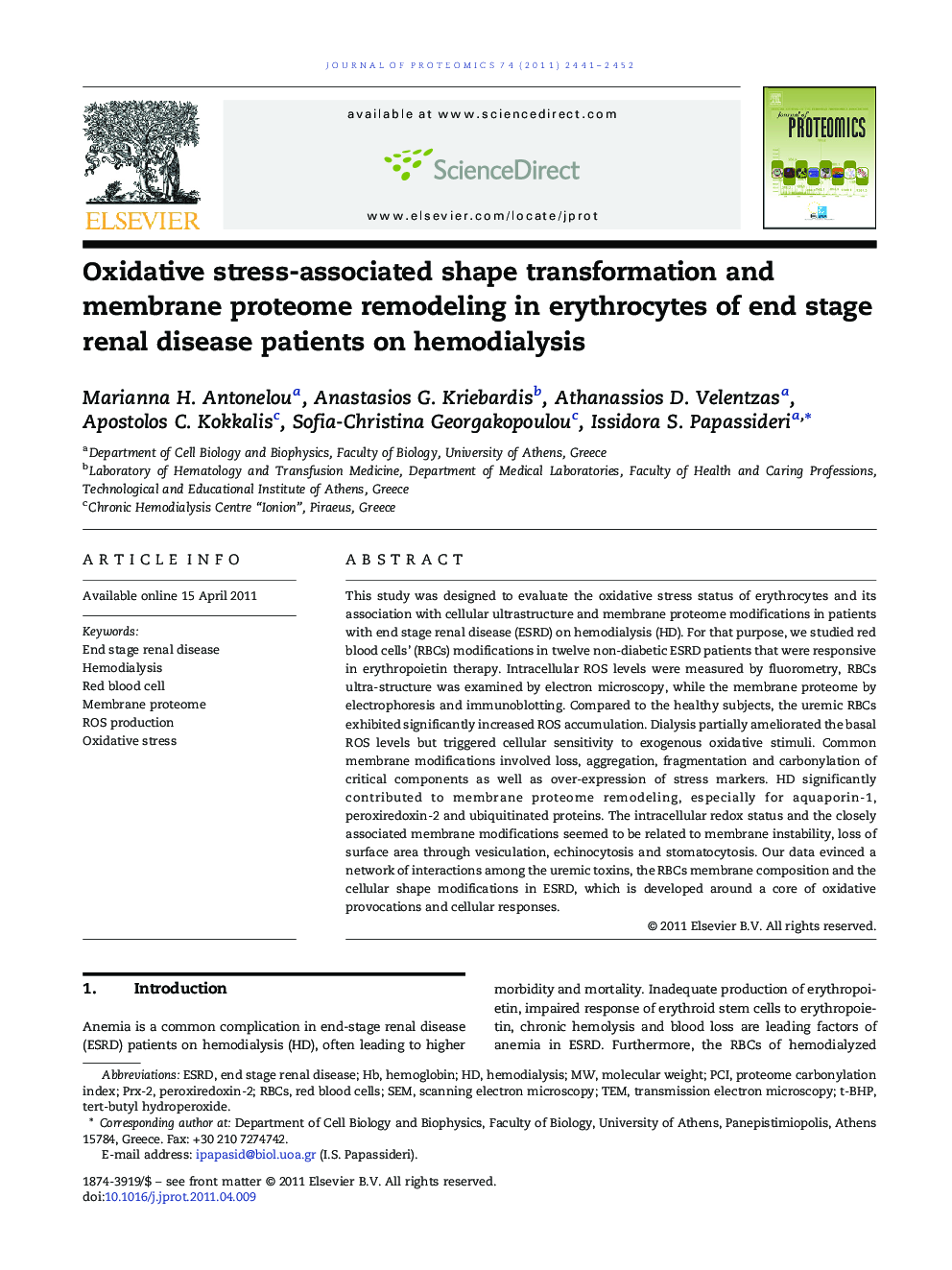| Article ID | Journal | Published Year | Pages | File Type |
|---|---|---|---|---|
| 1225413 | Journal of Proteomics | 2011 | 12 Pages |
This study was designed to evaluate the oxidative stress status of erythrocytes and its association with cellular ultrastructure and membrane proteome modifications in patients with end stage renal disease (ESRD) on hemodialysis (HD). For that purpose, we studied red blood cells' (RBCs) modifications in twelve non-diabetic ESRD patients that were responsive in erythropoietin therapy. Intracellular ROS levels were measured by fluorometry, RBCs ultra-structure was examined by electron microscopy, while the membrane proteome by electrophoresis and immunoblotting. Compared to the healthy subjects, the uremic RBCs exhibited significantly increased ROS accumulation. Dialysis partially ameliorated the basal ROS levels but triggered cellular sensitivity to exogenous oxidative stimuli. Common membrane modifications involved loss, aggregation, fragmentation and carbonylation of critical components as well as over-expression of stress markers. HD significantly contributed to membrane proteome remodeling, especially for aquaporin-1, peroxiredoxin-2 and ubiquitinated proteins. The intracellular redox status and the closely associated membrane modifications seemed to be related to membrane instability, loss of surface area through vesiculation, echinocytosis and stomatocytosis. Our data evinced a network of interactions among the uremic toxins, the RBCs membrane composition and the cellular shape modifications in ESRD, which is developed around a core of oxidative provocations and cellular responses.
Graphical abstractFigure optionsDownload full-size imageDownload high-quality image (88 K)Download as PowerPoint slideResearch Highlights► RBCs in ESRD exhibit increased ROS levels that are not normalized by HD. ► HD triggers the sensitivity of ESRD RBCs to exogenous oxidants. ► Membrane proteome changes include signs of aging, oxidative and carbonyl stress. ► HD significantly contributes to membrane proteome remodeling. ► The intracellular redox status is related to echinocytosis and stomatocytosis.
